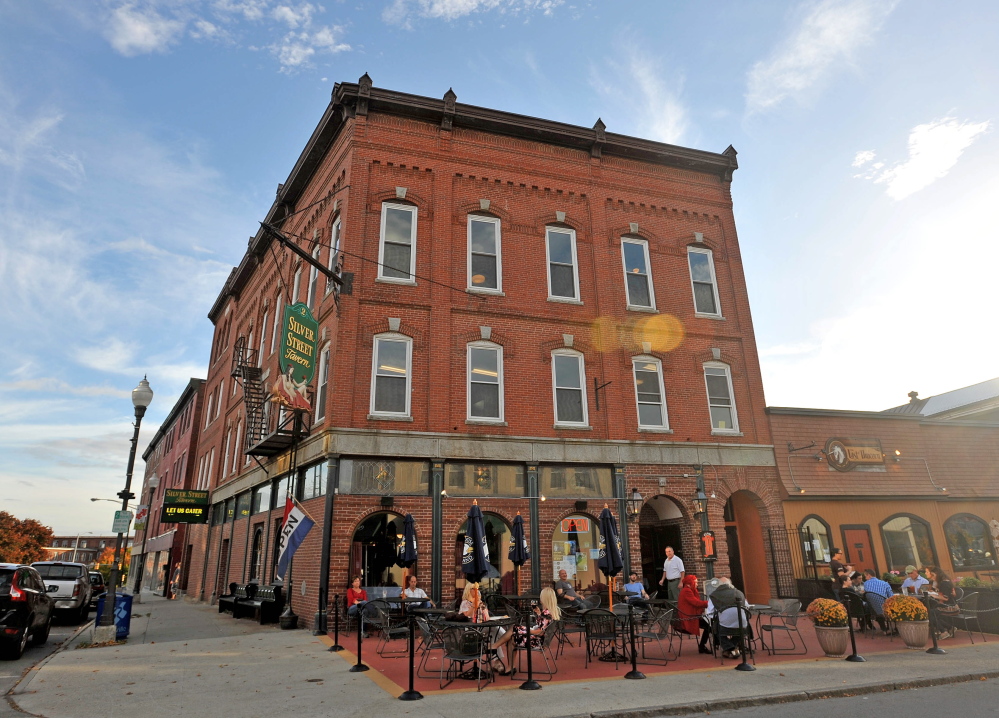As a young person growing up in central Maine in the 1970s, specifically in Augusta, I would often take the 20-minute journey north to Waterville with my parents to shop. Waterville at the time had a bustling downtown. This was in an era before shopping malls and outlets, a time when you went downtown to buy the sundry items required for living — shoes, clothes, groceries.
In a little over a decade, this model was turned on its head as people became more dependent on the car, and retail and residential patterns quickly changed to match new demands. Within 20 years, the downtowns across the state were vacant and struggling and many predictions were made about their imminent demise. In my hometown of Hallowell, a proposal was crafted by the state Department of Transportation to demolish the entire downtown to make way for a four-lane highway. At the time, this was seen as obvious and unstoppable progress. Who would want to live or work in these dusty old remnants?
Today, of course, downtowns are in full resurgence, and nowhere is that more clear than Waterville. What is not clear is why the gravitation pull of the downtown has resumed, whether it is nostalgic in origin or if there is something else at work. People who treasure the downtowns often talk about the “quality of place” that is associated with the often Victorian-era structures and roadways. But defining what that is can be significantly harder. The renaissance in Waterville may offer an answer.
Several months ago, it was announced that Colby College was investing a significant amount of time and treasure into a redevelopment plan focused squarely on downtown Waterville. The goal is clear — to be able to create a central commercial and residential district that is densely developed and which acts as both a visual and cultural draw for the school and for the region.
On the surface, the attractiveness may be seen through the lens of retail, such as art galleries, coffee shops and boutiques. However, what is less apparent is the true economic multiplier that comes from downtown activities in terms of non-retail job creation. Simply put, people want to work and live in downtowns, and any place people want to be, commerce will follow.
As someone who is in the business of providing office space for companies, I have seen the effect of the “downtown draw.” Companies looking to locate their companies are far more likely to be drawn to a downtown with places to eat, create and walk home rather than an isolated location that empties out at night.
Of course, some companies require close access to transportation hubs and energy sources that a downtown cannot provide. But companies in the high-tech sector are far more likely to be interested in locating in an interesting 19th century mill than an office park. For this reason, Maine has a competitive advantage; we have literally over a hundred downtown districts.
One can be anywhere in the world today and still conduct business. The Internet has freed commerce to locate in places never before imagined and freed people to work where they live. It is just as likely today to be located in Waterville, Maine, as anywhere else in the world. And just last month, Waterville proved this fact by locating a national technology firm that will be located in its downtown.
Many other factors came into play in this incredible announcement, including the hard work of several organizations.
But the draw of downtown cannot be understated. And it’s one of Maine’s most valuable economic assets.
Kevin Mattson, of Freeport, is the managing partner of Dirigo Capital Advisors and a 19-year veteran of the field of commercial real estate.
Send questions/comments to the editors.



Success. Please wait for the page to reload. If the page does not reload within 5 seconds, please refresh the page.
Enter your email and password to access comments.
Hi, to comment on stories you must . This profile is in addition to your subscription and website login.
Already have a commenting profile? .
Invalid username/password.
Please check your email to confirm and complete your registration.
Only subscribers are eligible to post comments. Please subscribe or login first for digital access. Here’s why.
Use the form below to reset your password. When you've submitted your account email, we will send an email with a reset code.